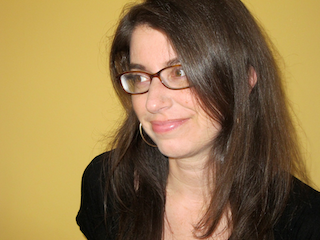
Hi, I’m Meredith Reitman, President of Reitman Research and Strategy, which provides research for organizations looking to explore racial dynamics in the workplace. I’m white. In this post I’m digging into the psychology behind white fragility, trying to answer the question of why we white folks act this way so that we can eventually make different choices.
As we know, white fragility causes harm, sometimes significant harm, to the people around us. None of us want to be that person, so why do we keep doing it? Dr. Dolly Chugh breaks it down:
- We white folks really want to think of ourselves as “good” (more on that in a minute).
- But we are – honestly! – a little unsure whether that’s true (again, we’ll get to that), so we really want our goodness to be affirmed by those around us.
- When it seems to us that we might not be being perceived the way we want to be perceived, we go into crisis mode.
- This crisis mode is called “self-threat.” It is psychological, but it lives in our bodies and, similar to a physical threat, it evokes the same response: a hyperfocus on self-preservation.
- In short, we will do anything (really, anything) to regain that alignment between perception and our internal sense of self as good.
What are our options in crisis mode? We often turn to what Sandra Kim calls the Three C’s of Dehumanization. We:
- “Control: try to make people change and force a specific outcome by insisting, pushing, coercing, manipulating, forcing.
- Condemn: make people wrong as people by vilifying, judging, shaming, blaming.
- Crush: deny multiple realities and layers of realities by minimizing, projecting, ignoring, suppressing.”
Lessons Learned: We do the Three C’s to each other and we do them to ourselves, all toward the goal of self-preservation. That sounds pretty bad, and it is. I’ve done it when getting feedback on my research that makes me want reassurance that I’m “good,” burdening people of color with my poorly-hidden desperation. It’s violent.
So what can we do to stop this oft-repeated trainwreck? What if we went to the source: our very tenuous hold on our self-image as good, which stems from our role in white supremacy as the oppressors? Dr. Janet Helms describes this dissonance as, “I don’t think I did anything bad in my life, but whenever we talk about these issues I feel like I did something bad in my life.” What if we let that tension go?
Hot Tip: What if instead, as Dr. Chugh suggests, we weren’t “good” at all? What if we considered ourselves merely “good-ish”? We are trying to improve, and fail, a lot. And we keep trying with enough faith in ourselves that we will do less harm over time (that’s growth mindset for you learning theory buffs). How much better could we hold ourselves accountable and apologize fully once we released our vice grip on needing to be “good”?
The American Evaluation Association is exploring White Privilege Week with our AEA colleagues. The contributions all this week to aea365 come from AEA members. Do you have questions, concerns, kudos, or content to extend this aea365 contribution? Please add them in the comments section for this post on the aea365 webpage so that we may enrich our community of practice. Would you like to submit an aea365 Tip? Please send a note of interest to aea365@eval.org. aea365 is sponsored by the American Evaluation Association and provides a Tip-a-Day by and for evaluators.
